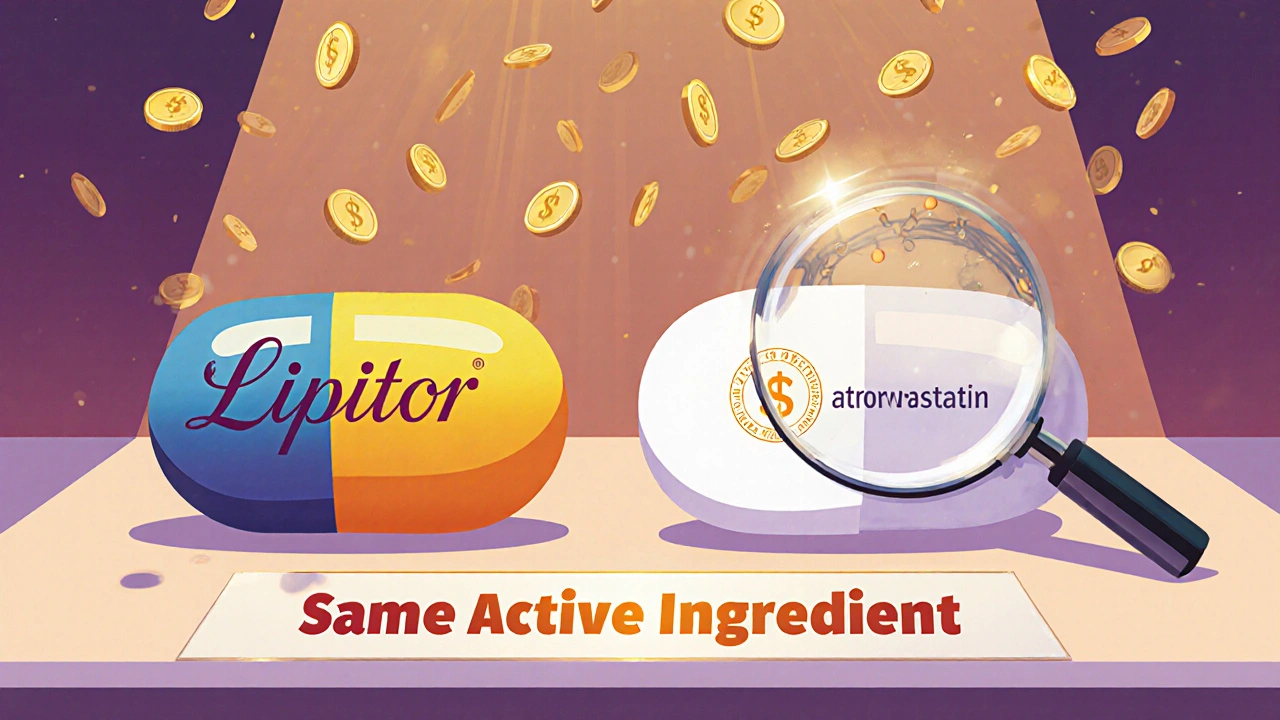
Generic Drug Cost Calculator
How much can you save with generics?
Learn your potential savings when switching from brand-name drugs to generics. Note: Some drugs with narrow therapeutic indices may require special caution when switching.
Monthly Savings
$0
Annual Savings
$0
Savings Percentage
0%
Note: For drugs with narrow therapeutic index (NTI) like warfarin, levothyroxine, or phenytoin, consult your doctor before switching. These drugs require careful monitoring when switching between brand and generic versions.
When you pick up a prescription, you might see two different pills on the counter-one with a fancy name like Lipitor, another with a plain label saying atorvastatin. You might wonder: is the cheaper one just as good? The short answer is yes-for most people, the generic version works exactly the same. But the label? That’s where things get confusing.
Same Active Ingredient, Different Look
Generic drugs aren’t knockoffs. They’re exact copies of the active ingredient in brand-name pills. That means if you’re taking generic atorvastatin, you’re getting the same molecule that’s in Lipitor. The FDA requires it. Every batch of generic drug must contain the same amount of active pharmaceutical ingredient, delivered the same way-tablet, capsule, injection-and work the same way in your body. So why do they look different? U.S. trademark law forces generic manufacturers to change the color, shape, or markings on the pill. You can’t make a generic pill that looks exactly like the brand-name version. That’s why your generic omeprazole might be a white oval instead of the purple capsule you got last month. It’s not a mistake. It’s the law.Labeling: What’s on the Box Really Matters
The label on a brand-name drug says Prilosec. The label on the generic says omeprazole. That’s the biggest difference you’ll see. But here’s what stays the same: indications, dosage instructions, warnings, side effects, and contraindications. The FDA mandates that generic drug labeling mirror the brand-name version in every clinically relevant way. You won’t find hidden warnings on generics. You won’t miss critical safety info. The FDA’s 2021 guidance on labeling makes this clear: if the brand-name drug says “may cause dizziness,” so does the generic. If it warns about interactions with grapefruit juice, the generic says the same thing. The only thing that changes is the name on the front.Therapeutic Equivalence Isn’t a Guess-It’s Tested
How do we know a generic works just as well? It’s not based on opinion. It’s based on science. Before the FDA approves any generic, the manufacturer must prove bioequivalence. That means they test how quickly and how much of the drug enters your bloodstream. They do this with 24 to 36 healthy volunteers. They measure two key numbers: Cmax (the highest concentration in the blood) and AUC (how much drug is absorbed over time). The generic must stay within 80% to 125% of the brand-name drug’s results. That’s a tight range. In fact, studies show that different batches of the same brand-name drug can vary more than that. Dr. Ameet Nagpal, a pharmacy director at Northwestern Medicine, put it plainly: “The 20% variability allowed in bioequivalence studies is actually tighter than the natural variation between different batches of the brand-name drug.”Cost Difference? It’s Not Close
Brand-name drugs cost a lot. Lipitor, for example, used to run over $375 a month before its patent expired. Today, the generic version of atorvastatin costs $4 at Walmart. That’s a 99% drop. The same pattern holds for most drugs. The Congressional Budget Office found that from 2007 to 2016, generic drugs saved the U.S. healthcare system $1.67 trillion. In 2023 alone, they saved $313 billion. That’s not a small number. It’s what keeps millions of people able to afford their meds. The FDA says 90% of generic prescriptions cost less than $10 a month. That’s not marketing. That’s data from real prescriptions filled across the country.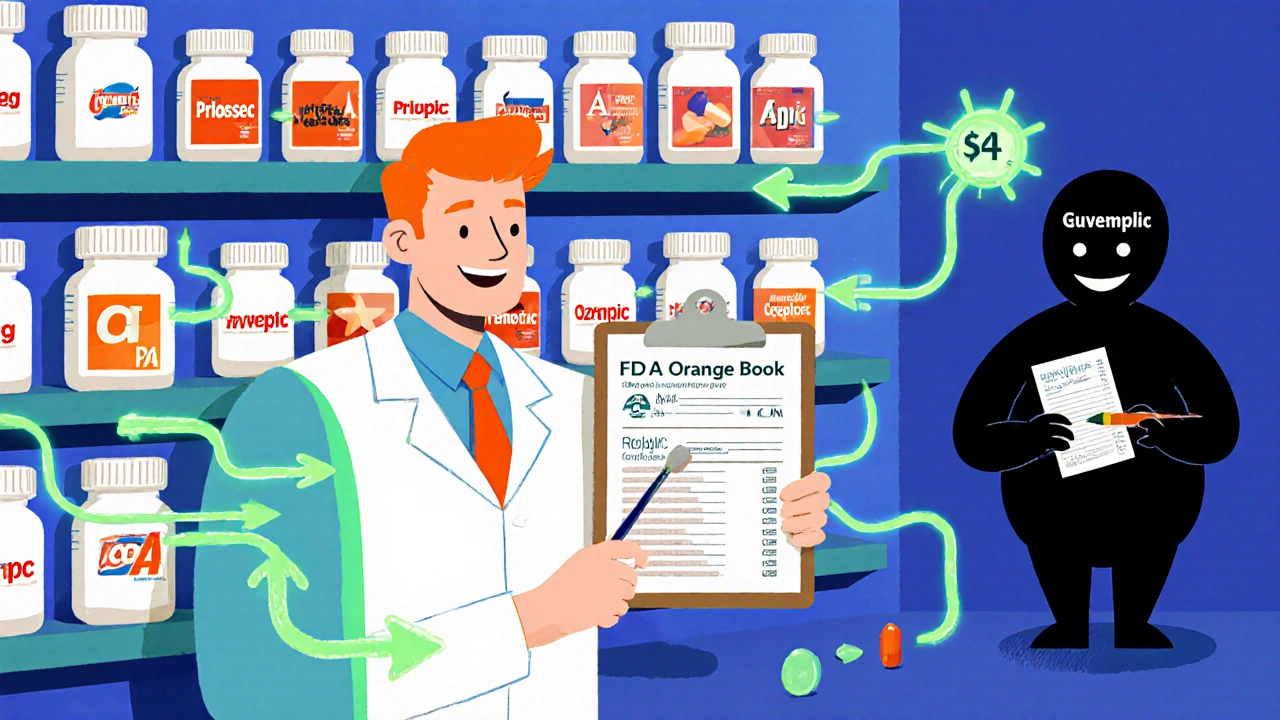
When Generics Aren’t Always the Same
There are exceptions. Some drugs have a narrow therapeutic index (NTI). That means even a tiny change in blood levels can cause serious problems-either the drug doesn’t work, or it becomes toxic. The FDA specifically calls out three: warfarin (blood thinner), levothyroxine (thyroid hormone), and phenytoin (seizure control). For these, switching between brands or between different generic manufacturers can require closer monitoring. Your doctor might check your INR levels for warfarin or your TSH for levothyroxine after a switch. A 2023 review in BMJ Open of 47 clinical trials found no drop in effectiveness for generics overall. But for NTI drugs, the data suggests caution-not because generics are worse, but because the margin for error is razor-thin.What Patients Really Say
On Drugs.com, generic atorvastatin has a 6.6 out of 10 rating from over 1,800 reviews. Lipitor, the brand, has a 6.3. Not a big difference. Most people say they saved money. Some say they didn’t notice any change. But a small number complain about confusion. One study from the University of Michigan found that 12% of patients hesitated when they got a pill that looked different-even if it was the same drug. They thought it was a mistake. Or worse, that they were getting a weaker version. Pharmacists see this all the time. Reddit user u/MedReviewExpert, who’s been in the field for 15 years, says: “I’ve switched thousands of patients from brand to generic with zero therapeutic issues, except for a few cases with levothyroxine where we monitored TSH levels closely.”Can Your Pharmacist Switch It Without Asking?
In 49 out of 50 U.S. states, yes. Pharmacists can automatically substitute a generic unless your doctor writes “Dispense as Written” on the prescription. Massachusetts is the only exception. That’s not a loophole. It’s policy. The goal is to save money without compromising care. Most doctors are fine with it. The American Medical Association found that 94% of physicians feel comfortable prescribing generics. But here’s what you can do: if you’re worried, ask your pharmacist. They can check the FDA’s Orange Book to see if the generic has an “A” rating-meaning it’s therapeutically equivalent. If it’s an “B” rating, that means there’s uncertainty. Those are rare, and usually for complex drugs like inhalers or topical creams.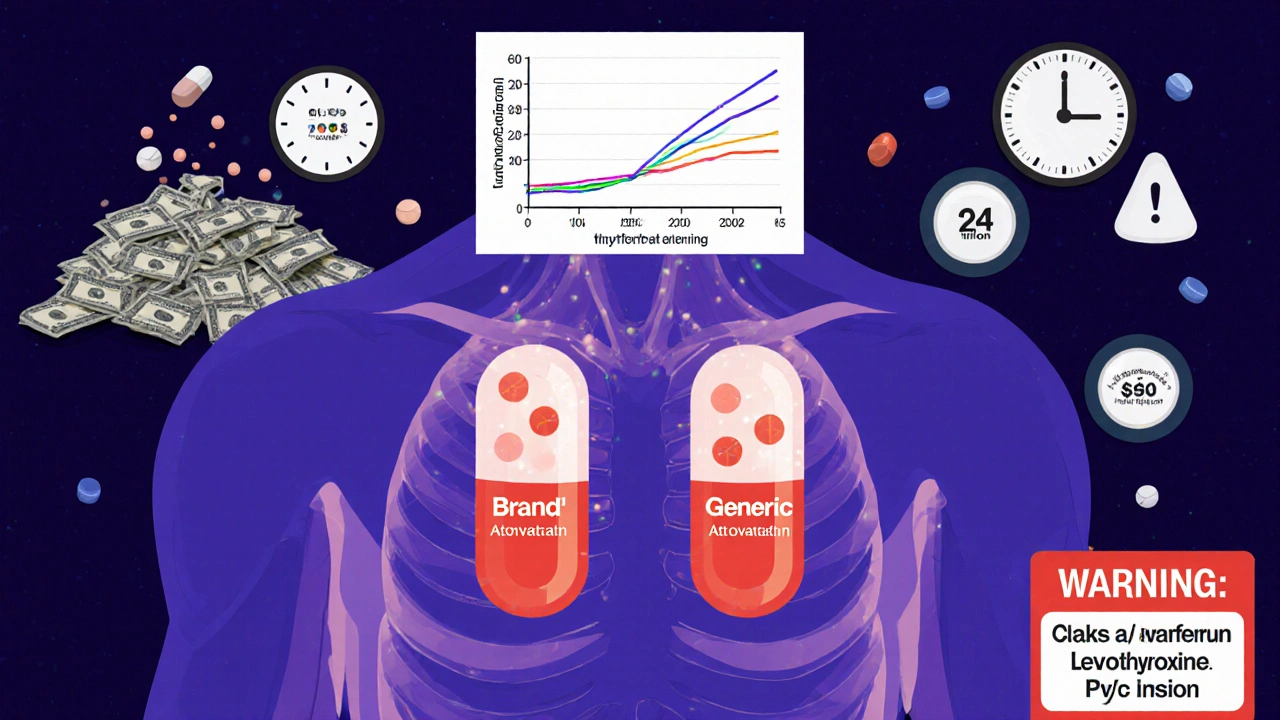
What About Newer Drugs Like Ozempic?
The first generic version of semaglutide (the active ingredient in Ozempic) was approved in September 2023. That’s a big deal. Semaglutide is a complex molecule, and it took years to develop a generic version that works the same way. That’s the future. The FDA is pushing to approve more complex generics-things like inhalers, patches, injectables, and extended-release pills. In 2022, they approved 79 complex generics, up 22% from the year before. The goal? Cut costs on the most expensive drugs.Why This Matters for You
You don’t need to pay more for the same medicine. The FDA doesn’t allow generics to be inferior. The science backs it. The data backs it. Millions of people use generics every day without issue. If you’re on a chronic medication, switching to generic could save you hundreds-or even thousands-of dollars a year. That money can go toward food, rent, or filling another prescription. If you’re worried about a switch, talk to your doctor or pharmacist. Ask if your drug has a narrow therapeutic index. Ask if the generic has an “A” rating in the FDA’s Orange Book. Ask if you need a blood test after switching. But don’t let the color or shape of the pill scare you. The active ingredient is what matters. And that’s the same.What to Do Next
- Check your next prescription. Is there a generic option? Ask your pharmacist.
- If you’re on warfarin, levothyroxine, or phenytoin, ask your doctor if you need a blood test after switching.
- Use the FDA’s Orange Book to look up your drug. Search by brand or generic name. Look for “A” ratings.
- Don’t assume a different-looking pill is weaker. It’s likely the same drug, just cheaper.
- If you notice a change in how you feel after switching, tell your doctor. But don’t assume it’s the generic’s fault-sometimes it’s just your body adjusting.
Are generic drugs less effective than brand-name drugs?
No. The FDA requires generic drugs to have the same active ingredient, strength, dosage form, and route of administration as the brand-name version. They must also prove bioequivalence-meaning they work the same way in your body. Studies involving millions of patients show no difference in effectiveness for most drugs.
Why do generic pills look different?
U.S. trademark laws prevent generic manufacturers from making pills that look exactly like brand-name versions. So they change the color, shape, size, or markings. These differences don’t affect how the drug works-they’re only for legal reasons.
Can I trust generics for chronic conditions like high blood pressure or diabetes?
Yes. For most chronic conditions-like hypertension, high cholesterol, or type 2 diabetes-generics are just as effective. A 2021 JAMA Internal Medicine study of 2 million patients found no difference in outcomes between generic and brand-name cardiovascular drugs. The key is consistency: once you find a generic that works, stick with it unless your doctor advises otherwise.
Are there any drugs where generics aren’t recommended?
Yes-for drugs with a narrow therapeutic index (NTI), like warfarin, levothyroxine, and phenytoin, small changes in blood levels can be risky. In these cases, your doctor may recommend sticking with the same manufacturer or monitoring your levels more closely after a switch. But even here, generics are still safe and effective when used properly.
How do I know if a generic is FDA-approved?
All FDA-approved generics are listed in the Orange Book. Look for an “A” rating, which means the drug is therapeutically equivalent to the brand-name version. If it’s not listed, it’s not approved. Always ask your pharmacist if you’re unsure.
Why are some generic drugs more expensive than others?
Price differences between generic versions come from manufacturing costs, competition, and supply chain issues. One manufacturer might have lower overhead, or there might be a shortage of a raw material. It doesn’t mean one is better or worse-just that market forces affect pricing. Always compare prices at different pharmacies.

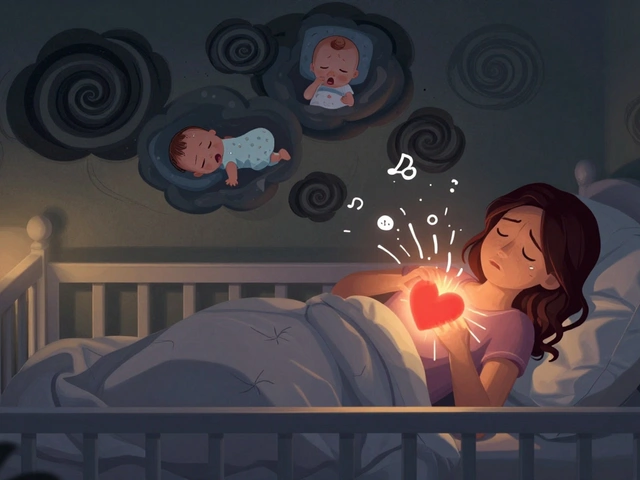
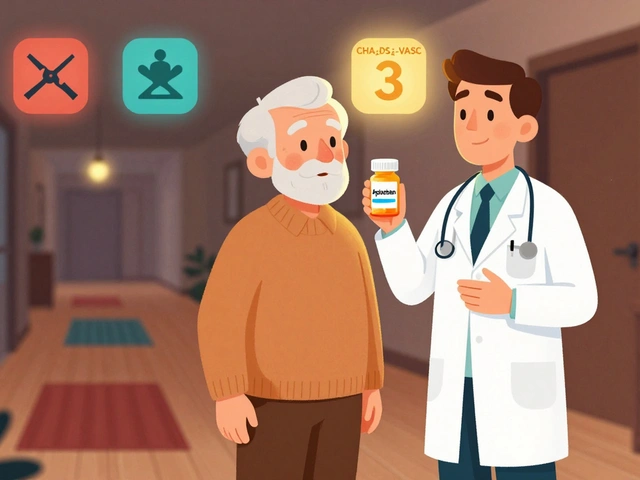
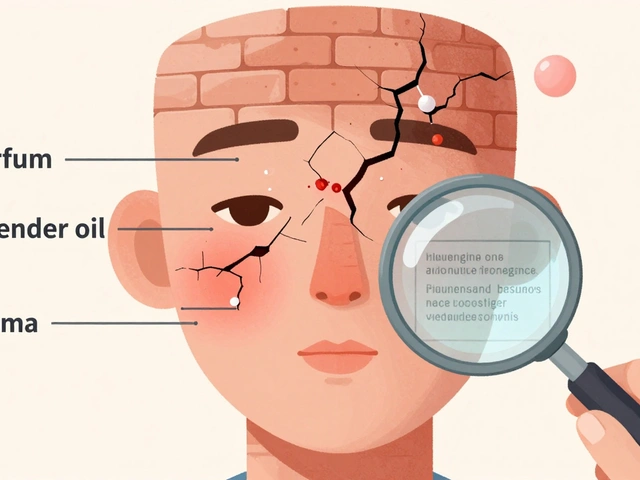
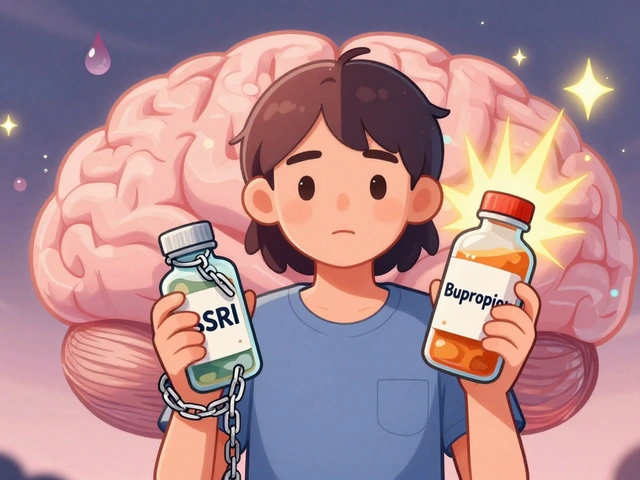

16 Comments
Let me tell you something, America: we don't need foreign-made generics telling us what our bodies can handle. The FDA? A joke. I've seen people get sick switching to these knockoff pills. They're cheaper because they're cut with crap. Our pharma industry built this country, and now we're letting China and India run the show with their substandard pills. Wake up, sheeple.
It is important to note, however, that while the FDA mandates bioequivalence, the statistical tolerance of 80%-125% is, in fact, a 45% window of variability-far beyond what one would consider clinically insignificant. Moreover, the excipients used in generics are not subject to the same scrutiny as the active pharmaceutical ingredient, and may induce idiosyncratic reactions in sensitive populations. One must also consider the lack of post-marketing surveillance for generics compared to brand-name products, which are monitored under Risk Evaluation and Mitigation Strategies (REMS). The data is misleading if presented without context.
Bro, I been on generic metformin for 5 years and my sugar is stable 😎. But lemme tell u, when I switched to a new batch from a different maker, I felt like a zombie for 3 days. Not the drug-THE CARRIER. Some of these generics got fillers that make me wanna nap at 2pm. FDA says it's fine, but my body ain't a lab rat 🤷♂️. Also, why is my pill blue now? Last time it was green. Smh.
Interesting breakdown. Bioequivalence studies are indeed rigorous, but I'm curious about the impact of polymorphic forms of the active ingredient. Different crystal structures can alter dissolution rates, even if the chemical formula is identical. Have any studies controlled for this? Also, the 80-125% range is a population-level metric-individual pharmacokinetic variance can still lead to suboptimal outcomes in extreme cases, especially with NTI drugs. The Orange Book doesn't always reflect these nuances.
YOOOOO I JUST SAVED $400 A MONTH SWITCHING TO GENERIC LIPITOR!! 🙌 I was scared at first, looked at the little white pill like it was gonna bite me, but guess what? I'm alive, my cholesterol is down, and I bought a new guitar. Who cares if it's purple or white?! The medicine's the same. Stop overthinking it. Life's too short to pay $300 for a pill that does the same thing as a $4 one. Go get your generics, y'all. 🎸💊
Wow. So you're telling me I paid $300 for a pill that's just a fancy color and a logo? And my pharmacist just swaps it without asking? Cool. So basically I've been paying for marketing this whole time? Thanks for the confirmation I'm a sucker. 😏
While the data presented is largely accurate and reassuring, it's important to acknowledge that patient perception plays a significant role in therapeutic outcomes, and the psychological impact of switching from a familiar brand to an unfamiliar generic can trigger nocebo effects-where the expectation of reduced efficacy leads to perceived side effects or diminished results. Furthermore, the variability in manufacturing standards across international generic producers, while regulated, still introduces a layer of uncertainty that is rarely discussed in public health messaging. A nuanced approach, including pharmacist-led counseling and consistent manufacturer selection, may yield better long-term adherence and outcomes.
Hey, if you're on a budget and need your meds, generics are your friend. I've helped dozens of folks switch, and 99% of them say they feel the same or better. Just make sure you stick with the same generic maker once you find one that works-switching between generics can cause issues too. And if you're on thyroid meds? Talk to your doc. Don't just assume it's fine. You got this 💪
Generic drugs are just as good lol. I mean duh. I've been taking them for years. My mom used to freak out about the color change but she's fine now. Also Walmart is cheap. End of story.
It is not merely a question of therapeutic equivalence-it is a question of national sovereignty. The United States has ceded control of its pharmaceutical supply chain to foreign entities with lax regulatory environments. The FDA's approval process, while ostensibly rigorous, is undermined by the outsourcing of manufacturing to countries with histories of falsified data and substandard facilities. To equate a generic manufactured in a facility in Hyderabad with a U.S.-produced brand is not science-it is ideological surrender.
Really appreciate the breakdown on NTI drugs-so many people don’t realize warfarin and levothyroxine need special attention. I’m a pharmacist in London and we do therapeutic drug monitoring for these routinely. Also, the Orange Book is gold. If you’re ever unsure, just ask your pharmacist to pull it up. They’re usually happy to show you the A-rating. Knowledge is power-and savings.
Can we just talk about how wild it is that we pay $400 for a pill that looks like a Tic Tac? 🤯 The branding is pure psychological manipulation. Lipitor? Sounds like a luxury car. Atorvastatin? Sounds like a chemical spill. And yet-they’re the same molecule. The FDA is basically saying, ‘Here’s your medicine, now pay extra for the logo.’ And we do. 😭💸
Okay, but let’s be real: the whole generic system is a scam designed to make Big Pharma look like heroes while quietly letting them patent the next version before the old one even expires. They delay generics with legal loopholes, then sell you the ‘new and improved’ version for $800. And now they’re pushing ‘complex generics’ like Ozempic? That’s not innovation-that’s just a new way to milk you. The system is rigged. You think you’re saving money? You’re just being herded into the next subscription model.
Great summary. Always check the Orange Book. If it's an 'A' rating, you're good. If you're on thyroid meds, stick with one brand of generic. And don't panic if the pill looks different-it's not a new drug, just a new shape. 🌿
My dad switched to generic blood pressure meds last year. No side effects, no issues. He said the only thing different was the price tag-and he cried happy tears. I wish more people knew this was an option. We don’t need to be scared of a white pill.
So you're saying I paid $300 for a purple pill with a logo and the white one does the same thing? Wow. I feel like a sucker. And my pharmacist just swaps it without asking? Cool. So I've been paying for advertising this whole time. Thanks for confirming I'm a dumb consumer 😌